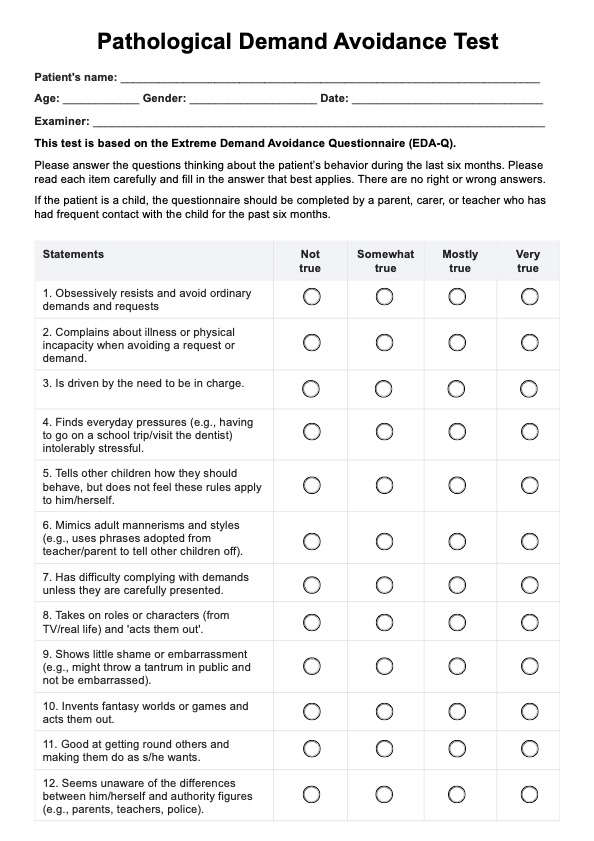Pathological demand avoidance (PDA) is characterized by an extreme need to avoid everyday demands, intense emotional responses, and a drive for control. If individuals know someone exhibits these behaviors (or if they themselves are aware that they exhibit such behaviors), tell them that a healthcare professional can guide them through the next steps for assessment.

Pathological Demand Avoidance Test
Know more about pathological demand avoidance and identify if your patient has the condition with the EDA-Q test. Use our template today!
Pathological Demand Avoidance Test Template
Commonly asked questions
In adults, pathological demand avoidance (PDA) often manifests as intense avoidance strategies in response to perceived demands, difficulty with authority figures, and a need to maintain control in social situations.
The exact cause of pathological demand avoidance (PDA) is not well understood, but it is often seen in individuals with autism spectrum disorder. It is believed to be linked to underlying neurodevelopmental differences that affect emotional regulation and perception of demands.
EHR and practice management software
Get started for free
*No credit card required
Free
$0/usd
Unlimited clients
Telehealth
1GB of storage
Client portal text
Automated billing and online payments











